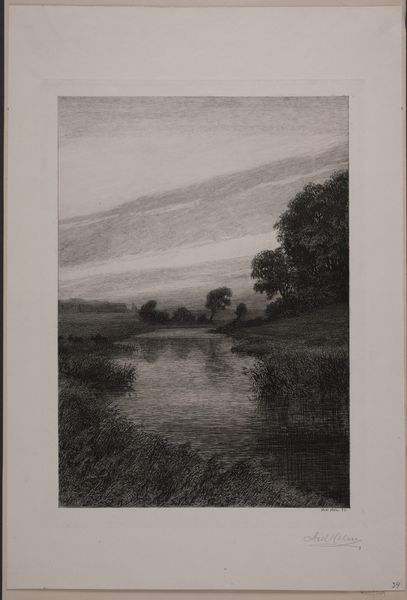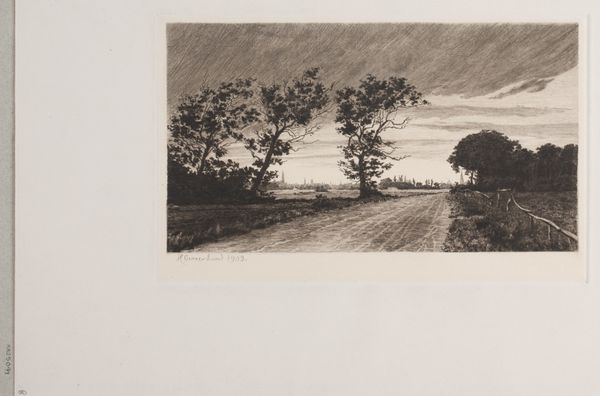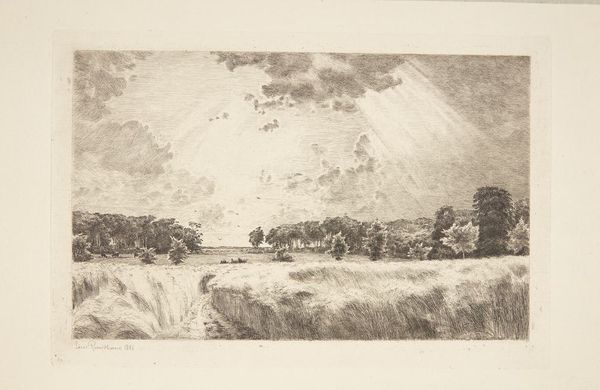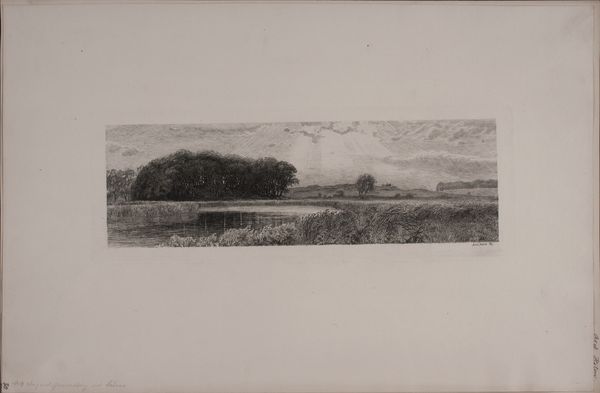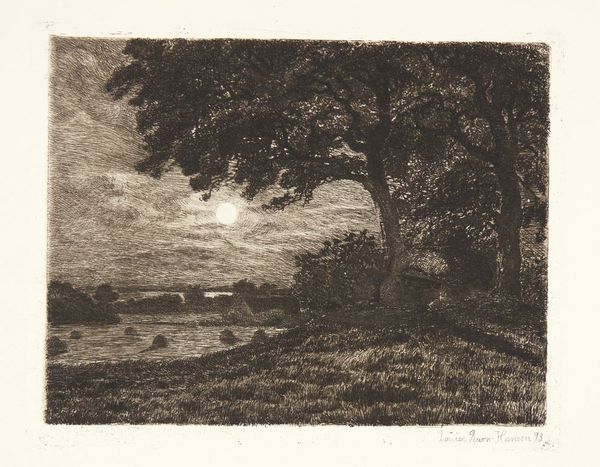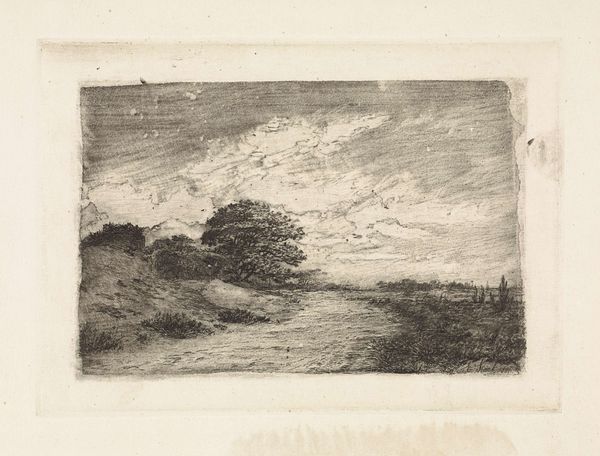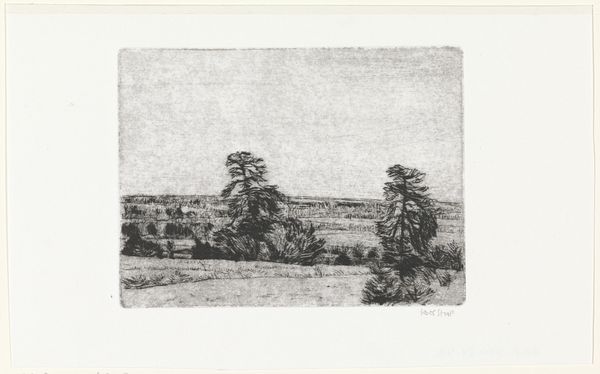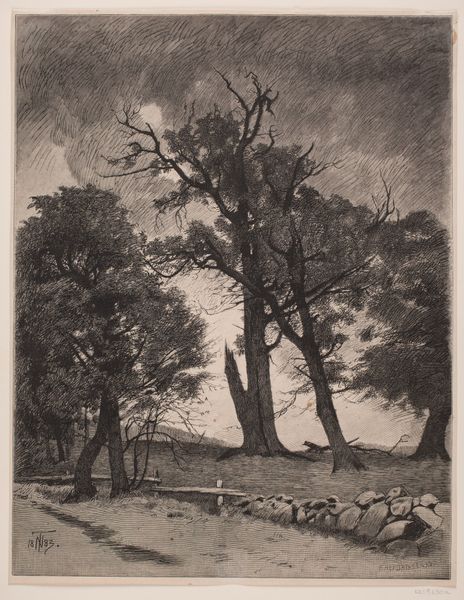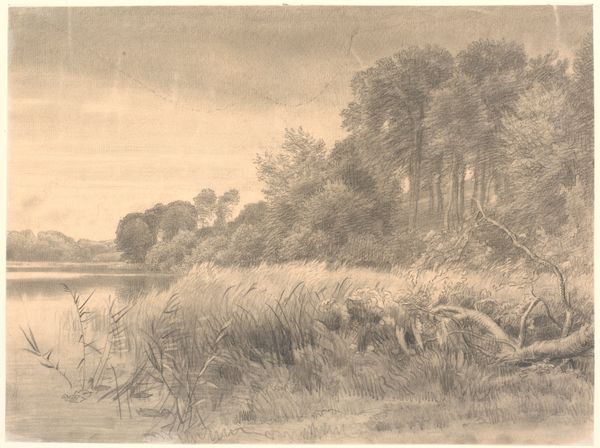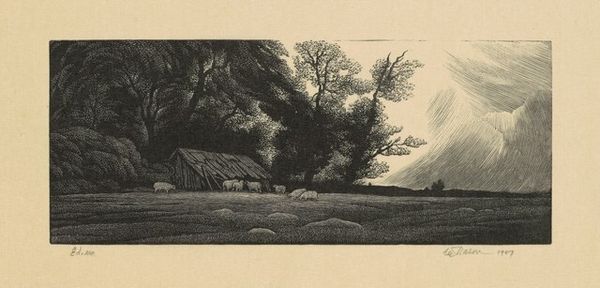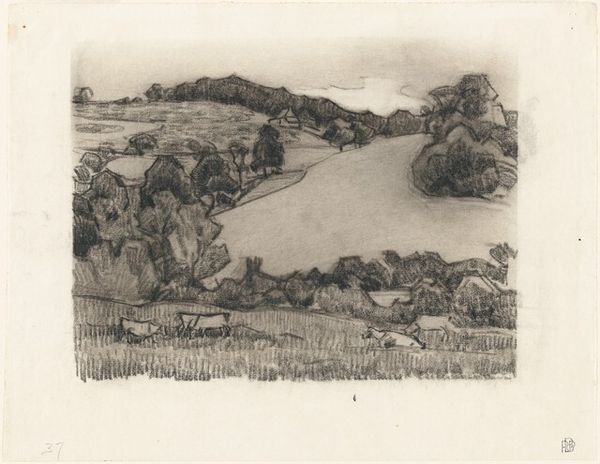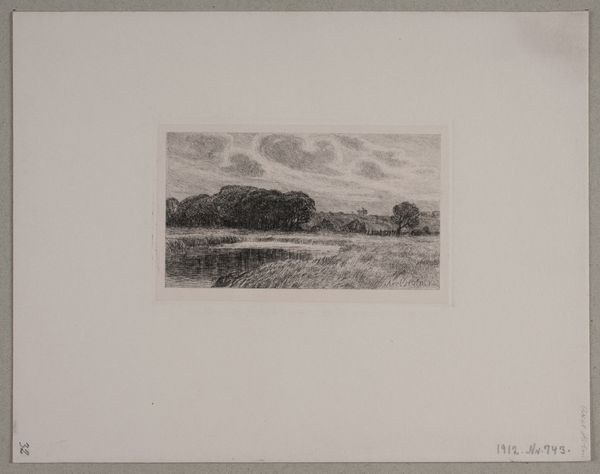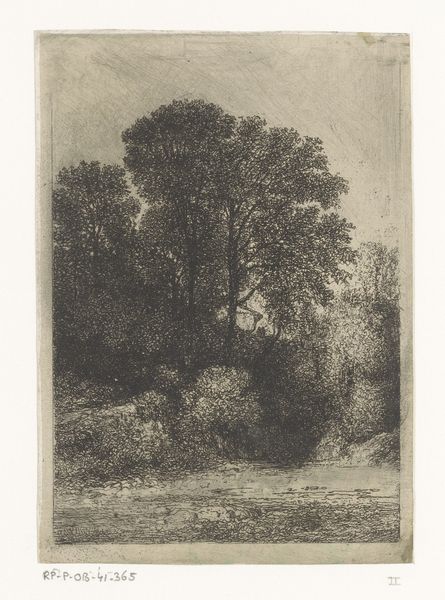
Dimensions: 360 mm (height) x 260 mm (width) (Plademål)
Editor: Axel Holm's "Sommereftermiddag udenfor Dyrehaven," from 1898, is a striking etching. I'm immediately drawn to the contrasting textures, especially the interplay between the meticulously rendered clouds and the rougher, almost chaotic, foreground. What significance do you think these elements might hold? Curator: It's fascinating how Holm captures the emotional weight of the landscape through such contrasts. The clouds, heavily symbolic of change and the sublime, hang over a scene deeply rooted in the Danish countryside. Notice how the cottage nestles near the edge of the woods. Editor: It feels almost protective, or perhaps a little ominous. What feeling is conjured through it, would you say? Curator: The etching technique lends itself to this nuanced representation. Look closely at the thatched roof; its gentle curve has been present in Danish building traditions for centuries, which acts almost like a protective shelter. The house isn’t just a dwelling. Holm invokes an established symbol of national identity. He emphasizes not just the architectural style of it, but he evokes ideas of warmth and belonging in opposition to the coming rain. How does it connect to memory and cultural continuity? Editor: I guess it reminds me of simpler times, childhood stories perhaps. So, in this context, the encroaching darkness above may represent the forces threatening that way of life? Curator: Precisely. Think of the psychological weight of a darkening sky, heavy with impending storms, especially against the stable presence of home. That home becomes so much more, doesn't it? Editor: Definitely! The more we unpack this, the more it reflects how art carries collective emotions. Curator: Indeed, etching goes beyond just pictorial rendering; its a cultural memory encapsulated within ink and paper.
Comments
No comments
Be the first to comment and join the conversation on the ultimate creative platform.
